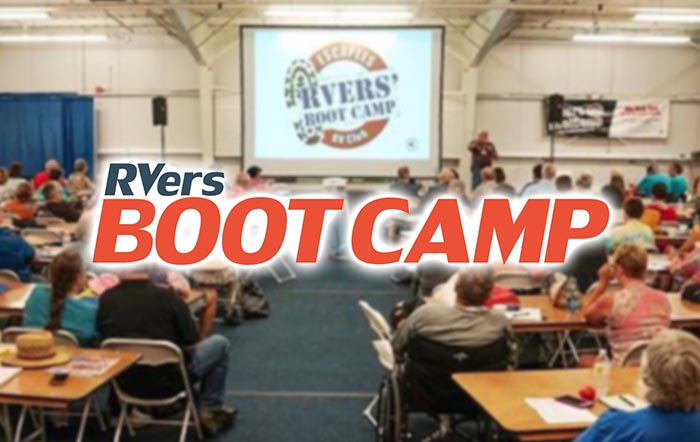We live in a world of electric appliances and gadgets, which are in almost constant use today. As a result, all of our RVs come with a power cord to supply 30 amps or even 50 amp to them at most stops. We seem to become more dependent upon electricity each year. We also seem to hear more and more stories of electrical power problems that do serious damage to those devices we seem to depend upon. The result of this has been the introduction of devices that are sold to us to protect our toys from this hidden demon. With so many devices available, and at such a wide range of prices, how can we know what, if any, of these we should spend money on?
The very least that you should carry is a simple outlet checker that will verify that you have proper polarity, ground and neutral on all of your RV outlets. Some of these also have a button that will test a ground fault outlet if you wish. A good next step is to purchase a reasonably good volt/ohm meter and learn how to use it to verify that the outlet you are about to use is connected properly and has the right voltage. These meters can be purchased for $30 to $50 and are not difficult to learn to use. Most come with instructions for how to use. These tools will not protect your RV from power problems that take place after you connect, but at least you will know that the power is safe to connect at the time of arrival.
Something you should understand about the more expensive power devices is that the use of them is much like wearing a seat belt. You really can’t say with certainty that the worst will happen if you don’t have one, but, if it should, you will be protected. The various devices out there have a wide variety of protections and purposes. The most common term applied to these devices is “surge protector,” but, in reality, some of them are much more than this. For this discussion, we will start with this most common term as it is the least costly of the group of products.
Surge Protectors
Surge protectors usually connect between the RV power cord and the power pedestal. They protect the RV equipment by opening if the power ever experiences a rapid rise in voltage such as would happen if lightning were to strike the power lines. Most of them also have a ground fault built into them. They typically cost between $75 and $100, and, while they do offer some protection, it is very limited and they do not prevent many of the more common problems.
Power Line Monitors
The next line of defense comes from devices that are power line monitors, although they are frequently referred to as surge protectors. They actually do much more and afford a much greater level of protection. These devices monitor the power for a period of time before connecting the RV, insuring that the power pedestal is properly connected and does not have a missing neutral or ground and that voltage is within the proper range, +/- 10 percent. Once the device connects the RV power, it continues to monitor these issues and will remove power if the voltage should go beyond safe limits or if some other problem occurs in the power supply. They do provide surge protection as well and, if power is interrupted, they continue to monitor and will reapply power if the problem goes away.
Sagging and Bruising
Where these devices really shine is when power does what techs call sagging. This is the most common power problem encountered by most RVs. A typical example of this is on a hot afternoon when you arrive in the park early and, upon checking the voltage at the pedestal, you find it to be satisfactory and you connect the RV. As the afternoon progresses, more RVs arrive, plug in and turn on the air conditioner. More and more RVs arrive, starting air conditioners, and it causes the park’s electrical system to be overburdened and the voltage begins to sag. When it reaches a point that it is below 108 volts, the low-voltage design limit, such devices will interrupt power.
This kind of damage is difficult to assess. It does not usually cause immediate failures, but it does cause electric motors to overheat and begin to experience damage. In the service world, the term used is bruising. The longer the voltage condition exists, the more damage is done, but it is not measurable and usually takes multiple incidents before failure takes place. I liken this kind of damage to that of a person smoking heavily. One time rarely ever does serious harm, but each time one smokes, the life expectancy of the person is shortened. This is exactly what most under- or over-voltage does to electrical equipment. The more often you experience voltage issues and the greater the voltage variation, the more that life expectancy for your equipment is affected. These kinds of problems are difficult to pin down, but my 32 years as a field service tech have demonstrated to me that this problem is very real.
There are several manufacturers of these devices, and the most common come from TRC, called the Surge Guard, and from Progressive Industries and called the EMS. Both come in 30-amp and 50-amp versions and enjoy solid reputations. The cost for these devices is usually between $300 and $400. These devices offer as much protection from power problems as one can usually expect to ever need.
Voltage Regulator
There is another device that can be purchased for use with an RV that adds yet another feature and that also increases the price as well. This device is voltage boosting and a voltage regulator, although they have several other names. These devices offer some of the protections of a line monitor in that they do provide surge protection, but rather than interrupting power when it sags, they actually boost the voltage back up to safe use levels. Some of them do indicate a missing neutral or ground, but they do not usually have the ability to interrupt power if that should happen. The device has a boost transformer inside that increases power, if needed, but does nothing when voltages are good. These devices are the highest in cost, ranging from $450 to near $700, depending upon features and 30-amp or 50-amp models.
There are three manufacturers of voltage boosters I am aware of, one from TRC, another from Hughes and a third one from Frank’s Electronics. They differ in price and in specifications, so check all three before you choose one for your RV. They are especially popular with those who winter in Mexico where poor quality and under-voltage power are very common problems. In newer RV parks, the need for this type of device is less common.
All of these devices for power protection are available in both portable and hard-wired versions. Some actually cost less when hard-wired, but they all require both space and some degree of ventilation. The voltage regulators are the largest and produce the most heat, so that should be considered when you research which choice best suits your needs. The portable models also have locking devices available that will improve security of their use. I have used one of the portable devices on our RV for years and have never had any problems with theft, but a little added security is never a bad thing. For the ultimate in protection, you should probably series one of these between the line monitor and the power pedestal, but that is expensive and rarely done because each provides a high degree of protection.
It is not possible for one to say if any of these devices will save you money or if you will experience major problems if you choose not to buy any of them. I have heard numerous stories of RVs experiencing major losses from surges and lightning strikes that cost hundreds or even thousands of dollars. Service engineers tell us that studies have shown that most appliances that fail in far less than a normal life expectancy have experienced the effect called bruising. It is highly probable that most RV appliances that fail in five or fewer years are the result of such exposure. Nobody can say with absolute accuracy whether or not you will experience power problems, so each one of us must choose the degree of risk that we are willing to accept. The purchase of them is like buying insurance.












